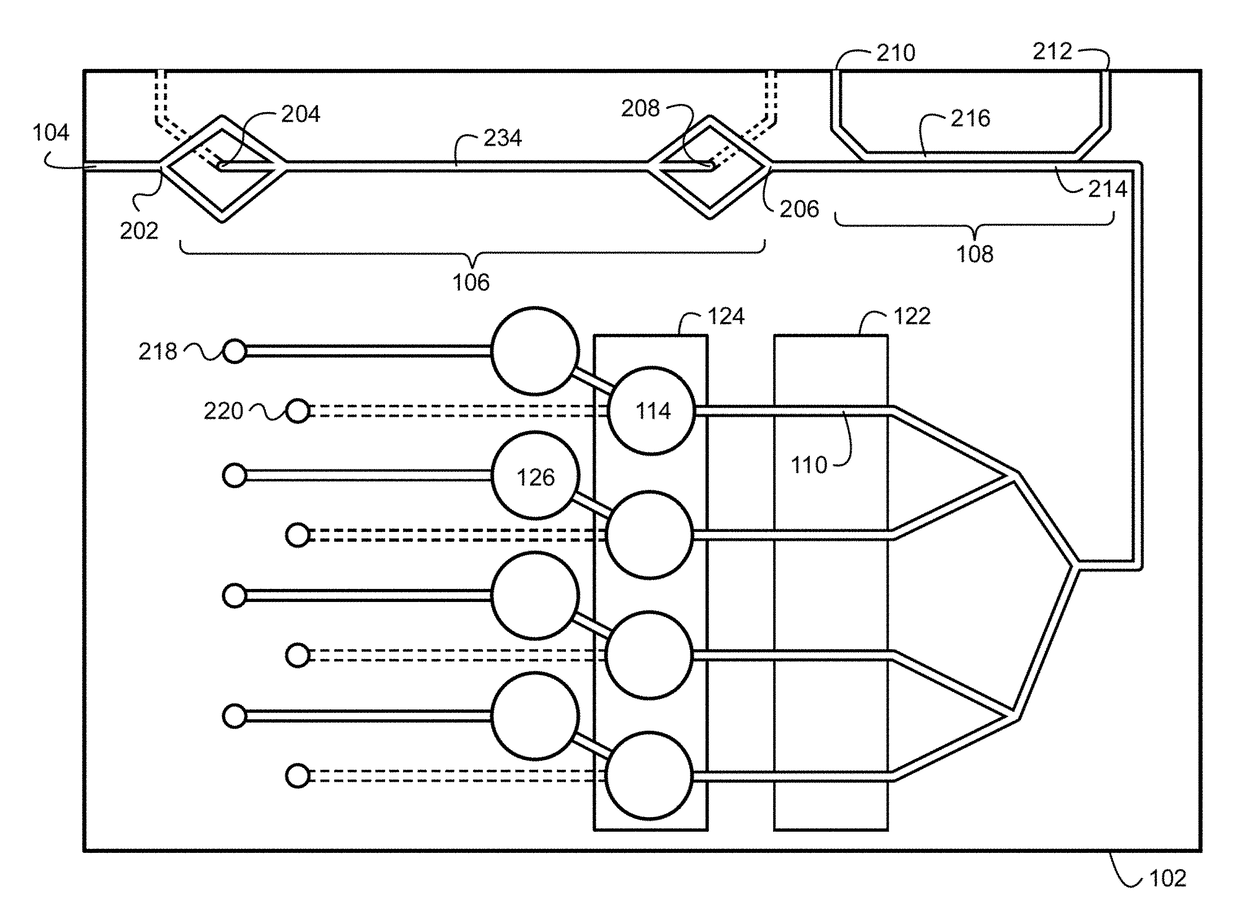Bacteria identification and antibiotic susceptibility profiling device
a technology of susceptibility profiling and bacteria, which is applied in the field of bacteria identification and antibiotic susceptibility profiling devices, can solve the problems of difficult to accurately identify and characterize complicated existing medical conditions of patients, and difficulty in accurately identifying and characterizing the bacterial species or strains responsible for infection
- Summary
- Abstract
- Description
- Claims
- Application Information
AI Technical Summary
Benefits of technology
Problems solved by technology
Method used
Image
Examples
example 1
Use of Recombinant Detector Bacteriophage Strain T7 NanoLuc® in Detecting Bacteria and Determining Antibiotic Susceptibility Profile
[0132]This Example demonstrates that the recombinant detector bacteriophage strains disclosed herein are useful in methods for bacteria identification and antibiotic susceptibility profiling.
[0133]FIG. 4 shows a heterologous nucleic acid sequence that was inserted near the Nhel site in the recombinant detector T7 bacteriophage (SEQ ID NO: 1). FIG. 15 shows the heterologous nucleic acid sequence that was inserted near the SwaI site in the recombinant detector T7 phage (SEQ ID NO: 6). The complete genome sequence of the DLPECO2 strain, a recombinant T7 phage that contains a double insertion of the NanoLuc® reporter gene, is shown in FIG. 5 (SEQ ID NO: 2).
[0134]T7 bacteriophage DNA was extracted from a clarified phage lysate using the Zymo ZR Viral DNA Kit (Cat no. D3015) (Zymo Research, Irvine, Calif.). About 100 ng of T7 phage DNA was digested with the r...
PUM
| Property | Measurement | Unit |
|---|---|---|
| Time | aaaaa | aaaaa |
| Width | aaaaa | aaaaa |
| Dimension | aaaaa | aaaaa |
Abstract
Description
Claims
Application Information
 Login to View More
Login to View More - R&D
- Intellectual Property
- Life Sciences
- Materials
- Tech Scout
- Unparalleled Data Quality
- Higher Quality Content
- 60% Fewer Hallucinations
Browse by: Latest US Patents, China's latest patents, Technical Efficacy Thesaurus, Application Domain, Technology Topic, Popular Technical Reports.
© 2025 PatSnap. All rights reserved.Legal|Privacy policy|Modern Slavery Act Transparency Statement|Sitemap|About US| Contact US: help@patsnap.com



